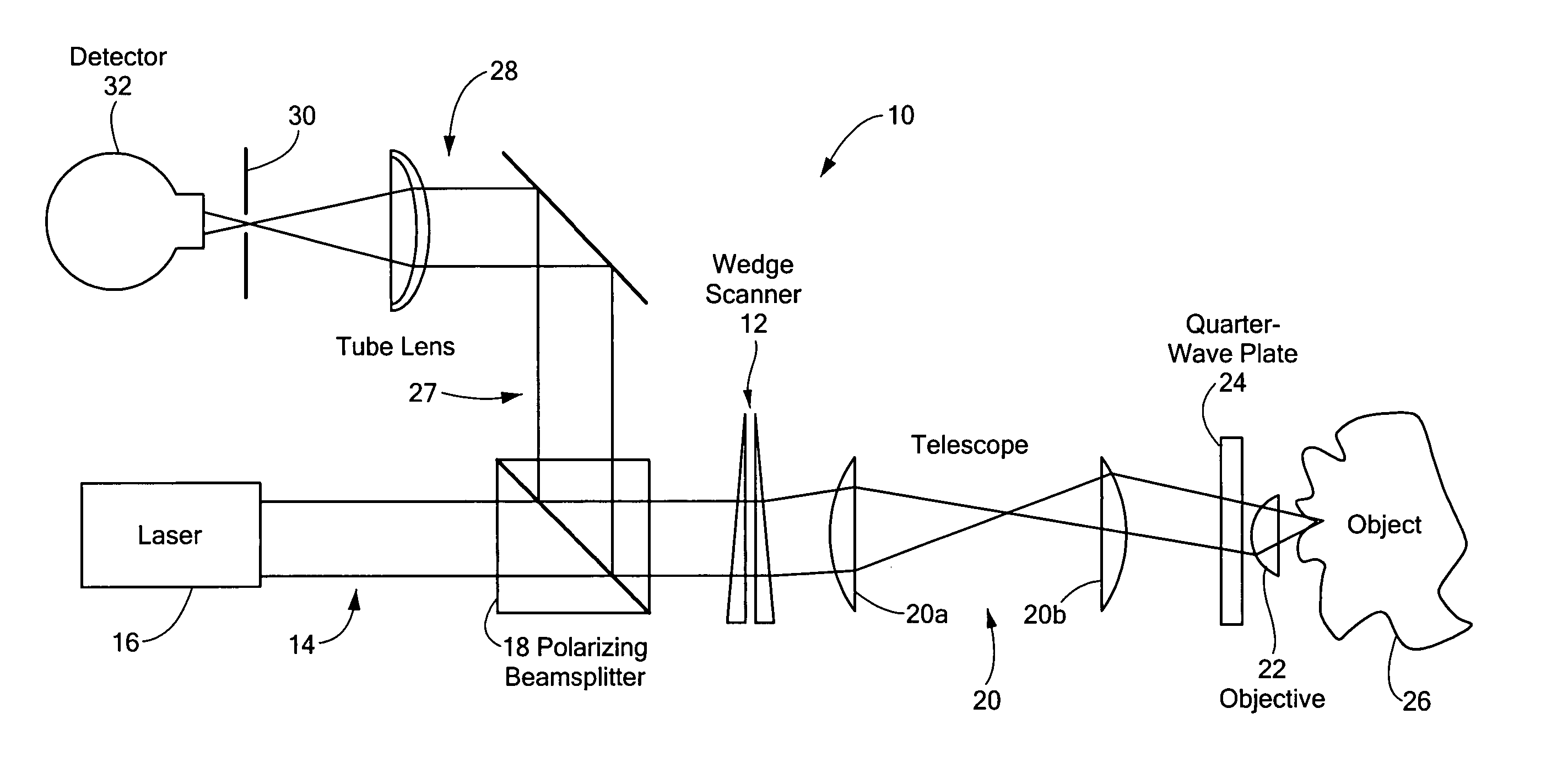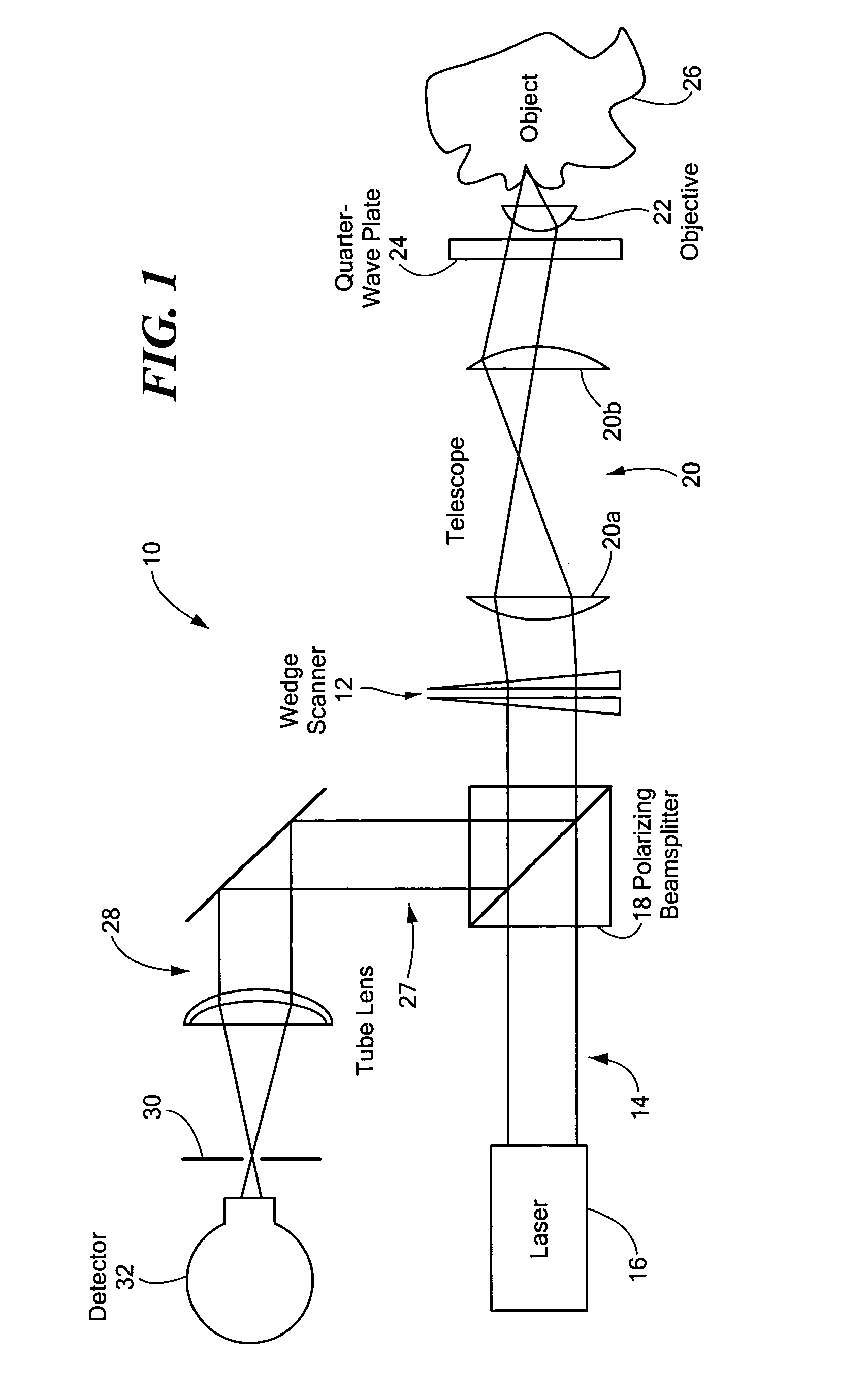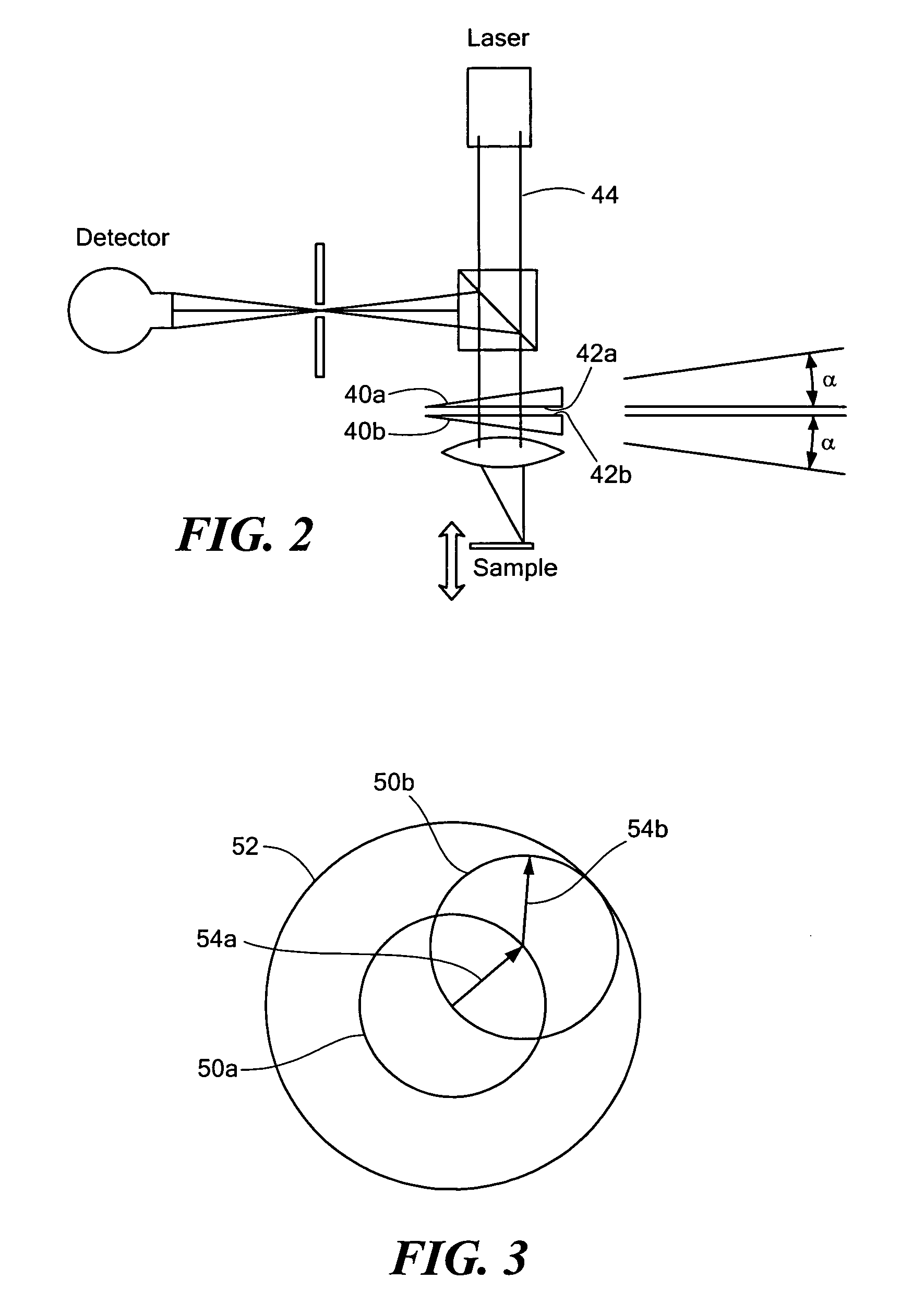Confocal reflectance microscope system with dual rotating wedge scanner assembly
a microscope system and wedge scanner technology, applied in the field ofconfocal microscopes, can solve the problems of reducing the lateral resolution of the array, difficult to use, and the optics in the beam scanning mechanism of these instruments are large and bulky, and achieve the effect of small size and low cos
- Summary
- Abstract
- Description
- Claims
- Application Information
AI Technical Summary
Benefits of technology
Problems solved by technology
Method used
Image
Examples
Embodiment Construction
[0020] A confocal reflectance microscope system 10 with a dual-wedge scanner assembly 12 is illustrated in FIG. 1. An optical path 14 begins at a light source 16, such as a laser, which has a strong degree of polarization. The power of the laser can be controlled to permit varying the depth of imaging as known in the art. The beam on the optical path passes through a polarizing beam splitter 18, with P polarization, and then through the dual rotating wedge scanner assembly 12, described further below. Next, the beam passes through a telescope lens assembly 20 that properly aligns the beam with the pupil of an objective lens 22 or lens assembly of the microscope. En route to the objective, the path passes through a quarter-wave plate 24, having an axis oriented at 45° to the laser polarization, after which the objective focuses the beam onto the sample or object 26.
[0021] The light is either absorbed, scattered, or reflected at various locations within the sample. Some of the light ...
PUM
 Login to View More
Login to View More Abstract
Description
Claims
Application Information
 Login to View More
Login to View More - R&D
- Intellectual Property
- Life Sciences
- Materials
- Tech Scout
- Unparalleled Data Quality
- Higher Quality Content
- 60% Fewer Hallucinations
Browse by: Latest US Patents, China's latest patents, Technical Efficacy Thesaurus, Application Domain, Technology Topic, Popular Technical Reports.
© 2025 PatSnap. All rights reserved.Legal|Privacy policy|Modern Slavery Act Transparency Statement|Sitemap|About US| Contact US: help@patsnap.com



